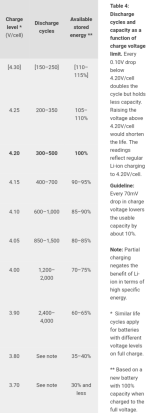Funkonabike
10 µW
- Joined
- Sep 10, 2020
- Messages
- 5
hello everyone
I'm looking to build a 1500w leafmotor kit with this battery, 52v 28ah and requested a 50amp bms
https://a.aliexpress.com/_mKPNNC3
Perhaps the 52v 20ah 50a bms battery since its half the price, but I don't believe it uses the Samsung cells.
Question I have is will the Samsung 35E cells in the 28ah pack have any life cycle issues at 40 to 45 amps continuous power?
If im not mistaken thats the power range I need for what I'm looking to do, I'm just having trouble finding appropriate 18650 solutions since em3ev doesn't have an over 40amp bms and luna is out of stock on the higher ah packs. Absolutely no idea how lipo set ups work, and not sure if drawing this much power out of the upp pack is going to shorten its life.
I like the extra range of 28ah but also the price for anything in that size from anyone other than upp starts to get a little crazy for what it seems to offer in terms of power delivery.
Thanks everyone!
I'm looking to build a 1500w leafmotor kit with this battery, 52v 28ah and requested a 50amp bms
https://a.aliexpress.com/_mKPNNC3
Perhaps the 52v 20ah 50a bms battery since its half the price, but I don't believe it uses the Samsung cells.
Question I have is will the Samsung 35E cells in the 28ah pack have any life cycle issues at 40 to 45 amps continuous power?
If im not mistaken thats the power range I need for what I'm looking to do, I'm just having trouble finding appropriate 18650 solutions since em3ev doesn't have an over 40amp bms and luna is out of stock on the higher ah packs. Absolutely no idea how lipo set ups work, and not sure if drawing this much power out of the upp pack is going to shorten its life.
I like the extra range of 28ah but also the price for anything in that size from anyone other than upp starts to get a little crazy for what it seems to offer in terms of power delivery.
Thanks everyone!


